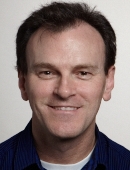Midface Development
The vertebrate face is a complex structure. Integrated morphological development of the varied tissues and structures that comprise the face is critical for effective interaction with the environment, such as feeding and sensory perception, and the survival of the individual. Development of these tissues and structures often depend on the expression of shared genes, such as fibroblast growth factor receptors (Fgfrs), which can be mutated in human syndromes characterized by midface dysgenesis, often in conjunction with other deleterious effects on bodily growth, such as craniosynostosis (e.g., Apert and Crouzon syndromes) and dwarfism (e.g., Achondroplasia). We are using mouse models of specific human activating Fgfr mutations to investigate the structural, cellular, and molecular effects of these mutations in bone, cartilage, and epithelium that combine to cause midface dysgenesis.
Craniosynostosis
Craniosynostosis, the premature fusion of cranial sutures, is a relatively common childhood disease (seen in up to 1 in 2,500 births), and can occur in isolation or as part of a syndrome affecting other organs in the afflicted individual. Where causative genetic mutations have been identified, mouse models are necessary to study the mechanisms of suture fusion and, in the case of syndromic craniosynostosis, the perturbed development of other tissues. We are using a variety of mouse models, particularly of Fgfr mutations responsible for Apert and Crouzon syndromes, and of the transcription factor Twist1 responsible for Saethre-Chotzen syndrome, to investigate the changes in molecular pathways and in tissue interactions underlying these syndromes, with a focus on cranial sutures, the palate, and the brain.
Craniofacial Suture Gene Expression and FaceBase
Knowing how sutures are formed and maintained is crucial to understanding craniofacial bone formation and the pathology of craniosynostosis, midface dysgenesis, and other craniofacial diseases. It is evident from gene expression patterns within sutures that signaling and regulatory pathways are organized within distinct cell subpopulations. Identifying both the full complement of gene expression and the cell subpopulation structure of sutures is vital to understanding the control of suture patency, osteogenesis and other suture functions such as providing stem cell niches and mechanical stability of the skull. In combination, single cell and bulk RNA-Seq applied to calvarial sutures provides this necessary information. As part of the FaceBase consortium (https://www.facebase.org/data/record/#1/isa:project/RID=1WW8) we are building a comprehensive RNA expression database comprised of 11 prenatal craniofacial sutures at key embryonic ages using laser capture microdissection-derived bulk RNA-Seq libraries from wild-type mice and craniosynostosis mouse models. These are complemented with single cell expression libraries for 4 calvarial sutures at key embryonic and postnatal ages from wild-type mice. Together with varied collaborators we are using differential gene expression analysis, gene co-expression network analysis, and a wide array of in vitro and in vivo experimental techniques to achieve a comprehensive description of suture biology and insights into suture and other craniofacial and bone diseases.
